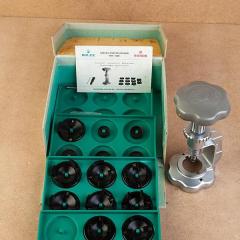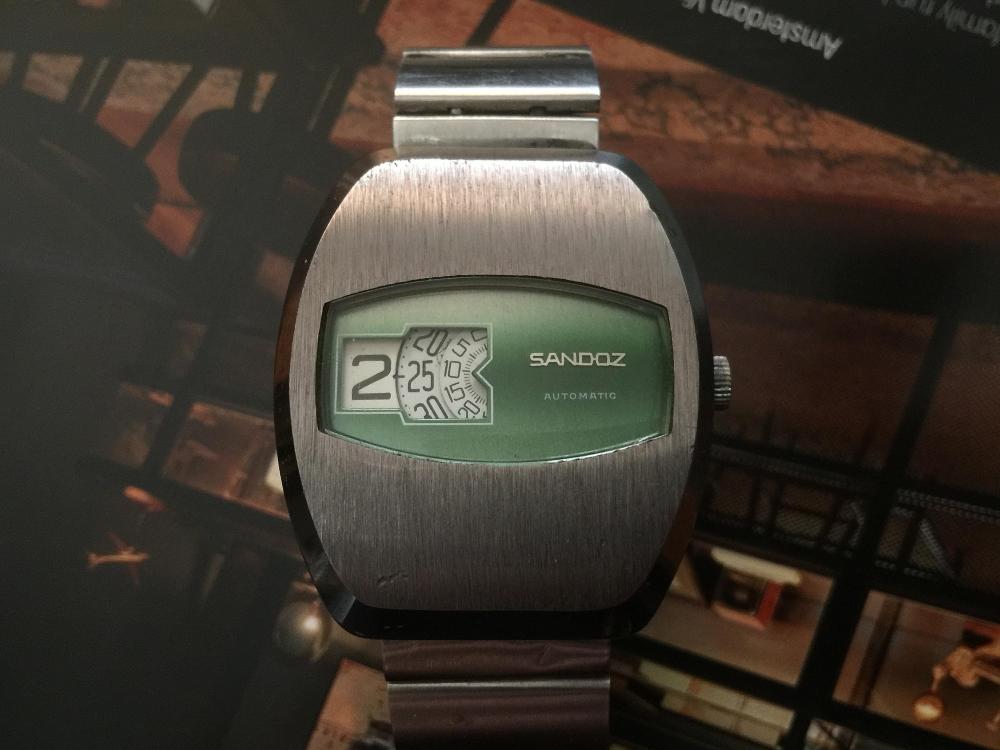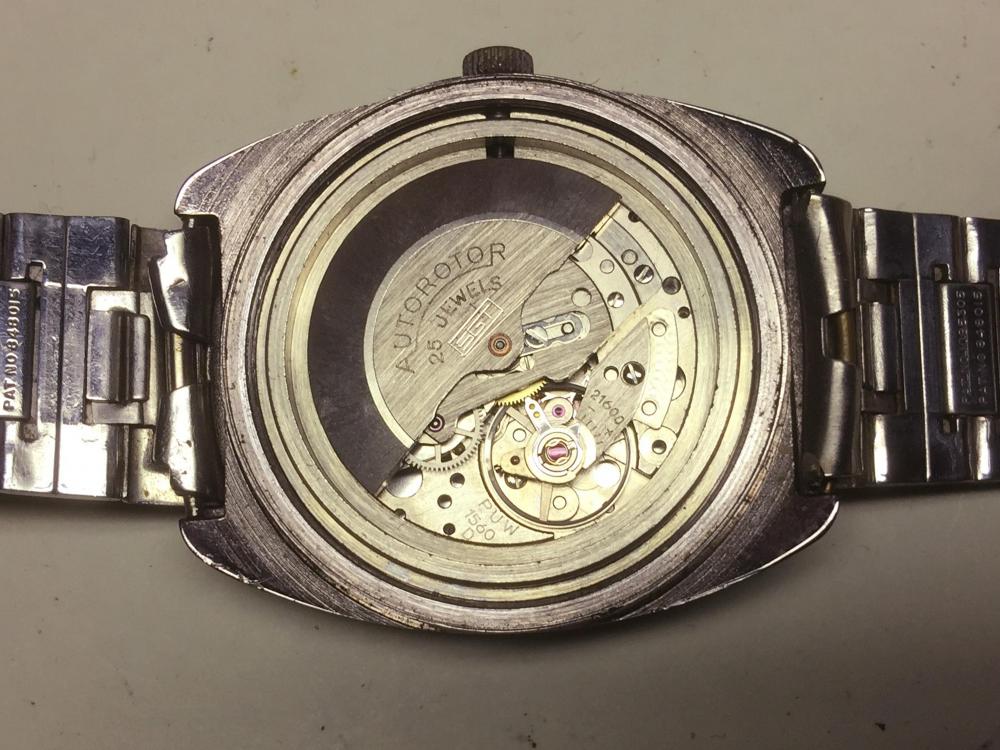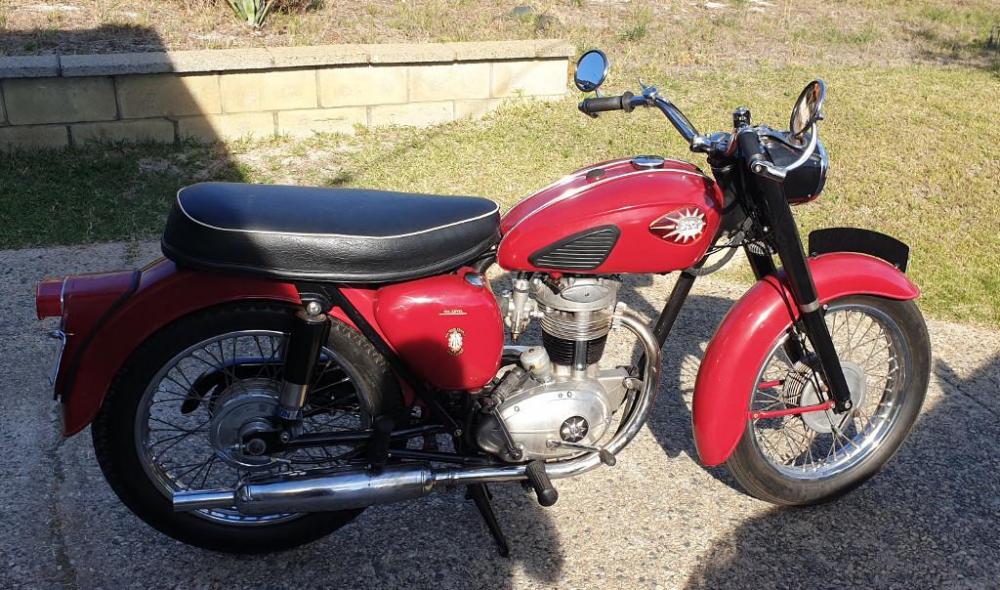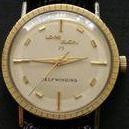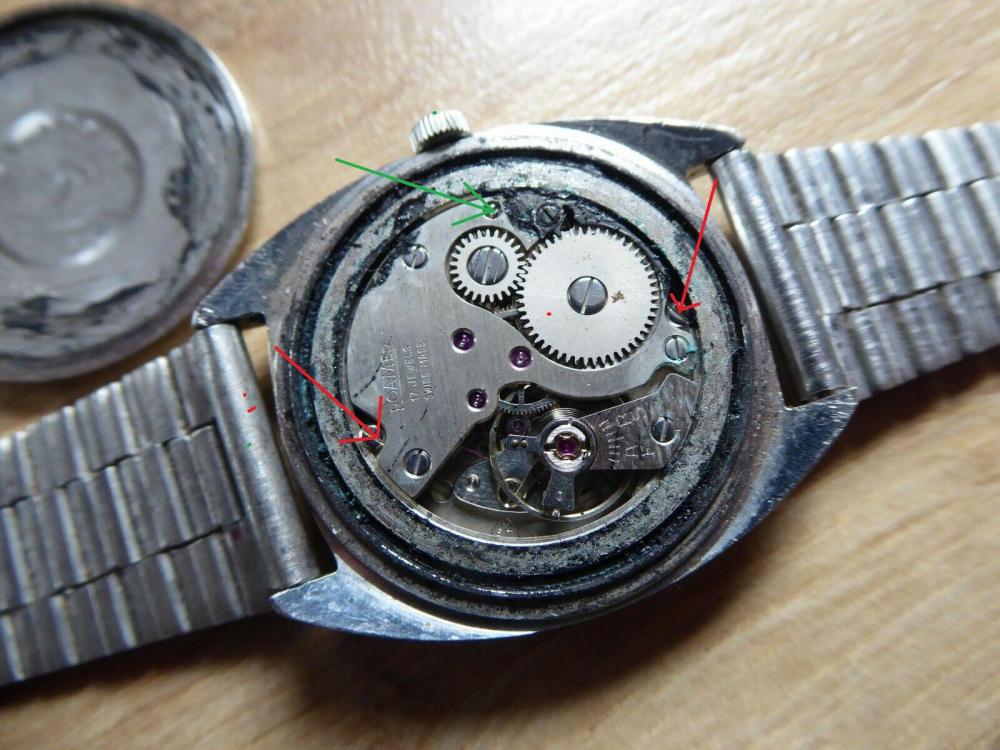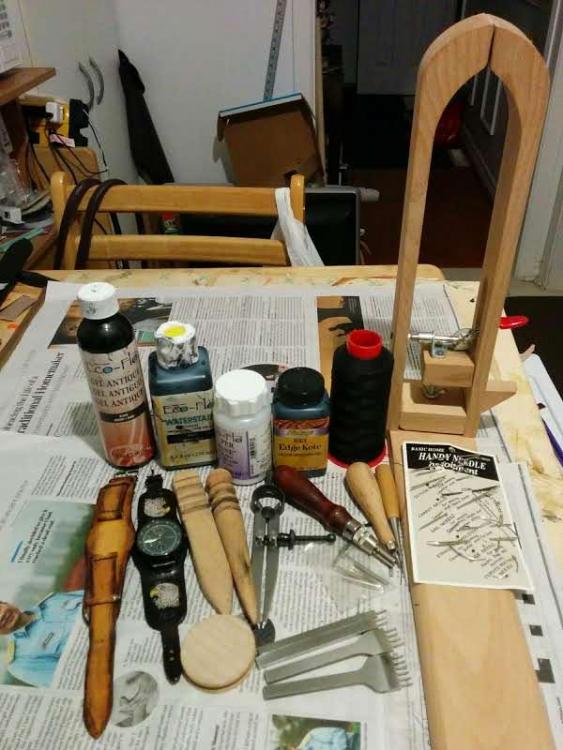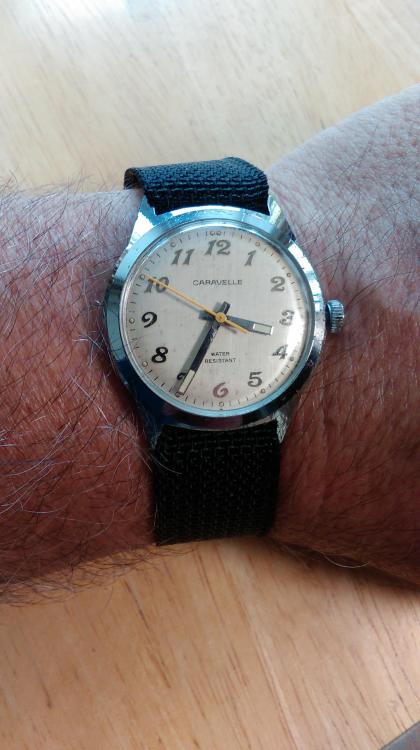Leaderboard
Popular Content
Showing content with the highest reputation on 06/03/19 in all areas
-
Cyma Watersport with a R420 bumper GF case. Guessing from the 50s or 60s?? Sent from my SM-G965U using Tapatalk5 points
-
5 points
-
2 points
-
Its a Baumgartner 866. The reason it is not advancing is because of the drive gear is riveted onto the barrel of the mainspring, and it needs to be tightened in order to drive the hour and minute hands. This is a characteristic problem that is unique to this type of movement in that it does allow the seconds to continue ticking because that gear is directly driven. I'll follow up later with more info. J2 points
-
During a brief dalliance with Timex quartzies last year, I picked up a couple of “Big Q” M135s from the early ‘80s, and also this slightly oddball 35mm “Small Q” jump-minute affair. The dial reference numbers declare it to be an M55 from 1979 and was bought as a non-working punt. I stuck in a new battery, more in hope than expectation, and got lucky. As many will know, these things don’t tick, being silent and unmoving in operation. Rather than every second, this accumulates over 59 seconds until on the 60th and with a distinct “click”, the minute hand jumps to the next marker. It also hacks. From what little I’ve been able to glean from a variety of sources and to which I’m much indebted: The movement is what Timex called a rocker motor, only ever used by them and was in production from 1978 to 1980. Allegedly, the M55 didn’t appear in their catalogues but is mentioned in the Timex museum notes. There was also a date version, the M56. One thing I can vouch for is that it’s spookily accurate and the claimed +/- 15 secs per month really doesn’t do it justice, even after 40 years. I’ve attached a link to Chris Lorenz’s resource, translated from the original German, here: https://17jewels.info/movements/t/timex/timex-m43/ which although focussing on the M43 is what I expect my M55 to look like if my sausage fingers ever pluck up the courage to remove the black plastic cover. As they say, if it ain’t broke ..etc… It also provides a link at the bottom of the page to the 1977 rocker motor patent details for those who may be interested. Regards.2 points
-
Without it being put on a timing machine we can't really say, but if the second hand is occasionally stopping unless it is just loose which I doubt the watch probably needs servicing, which would require a complete strip down, clean and oiling. I treat any watch I get from ebay especially including ones that state 'Has just been serviced' as most likely in need of a service2 points
-
It is a public holiday in Western Australia today (WA day), and today was a big day. The BSA in my avatar for the first time in about 5 years I took it for a ride today. When I purchased it, it cosmetically looks pretty good, but mechanically was not so good. I started a ground up restoration on it 5 years ago, but the project stalled a couple of years back due to me not having enough time and some of the engine work I did not feel confident to do. A few months ago my dad mentioned he was looking for a project to give him something to do so I gave him my BSA with the deal I would keep it licensed and pay for any parts needed that I hadn't already purchased and he could finish the restoration and keep the bike to ride until he was bored of it. He got it running a few days ago, so I dropped by today and took it for a ride. I have been looking forward to having that ride for the last 5 years. The bike still needs a little more tweaking before its 100% complete, now my dad is on the hunt for another vintage bike. Shame I had to sell my WM20 project bike a couple of years back. Anyhow, this is how it looks now, not hugely different from before, but mechanically much sounder. I'm sure it will give my dad another few months of fun before he gets bored of it and hands it back.2 points
-
2 points
-
2 points
-
Hi I have enclosed the tech sheet for the BFG866 movement (Baumgartner) should be useful when dismantling the movment I have done a few 866's solid watches 2529_BFG 866,866.31.7 (1).pdf1 point
-
Hi I have attached the tech sheet for the 7002A, It may be of some assistance should you decide ti dismantle and clean the watch 1841_Seiko7002A.pdf1 point
-
https://www.esslinger.com/watch-bezel-spring-no-6-tag-heuer-watch-rotating-ring/ Not the exact size but they have others. Sent from my SM-G950U using Tapatalk1 point
-
As it’s a Roamer I expect it has a two piece stem. They pull out, you need to have something behind the button and give a good pull. I always used nippers. You will need to remove the glass with a crystal lift. Then un- screw the two screws (red arrows) the movement should drop out from the front. Un-do the stem screw (green arrow)1 point
-
I use mostly Eco Flo products from Tandy Leather but there are others like Fiebings. The accompanying picture has some of the things used in making a watch strap and also in the pic are some of the earlier straps I made which are quite simple. You start with a fairly thin piece of leather and cut it to shape, make sure the edge is straight then you skive the edge down so it will bend to fit over the pin. You would then use an edge beveler (the thing with the mahogany colored handle in the pic) to bevel the edge so as to make it rounded on both sides, top and bottom. Then you would slick the edges with an edge slicker (the 3 wood things in the pic). You would use the groove that best fits the leather you're slicking. Just dip your finger in some water or gum tragacanth and run it along the edge and rub the slicker vigorously back and forth until the edge is slicked and smooth. Let it dry and then apply stain with a damp sponge. Let dry then fold over the ends you're going to sew, apply some glue, then mark your stitching line with wing dividers then use the stitching chisels to make the holes. There are 4 stitching chisels in the pic, the one with the most prongs is used for long straight lines and the 2 prong for curves. You would then get needle and thread and sew her up using a saddle stitch, backstitch 1 hole, cut your thread and burn the ends to melt it. When stitching along the length of the strap, it is helpful to get a stitching pony, that is the gizmo on the right of the pic. You sit on it and place the work in the jaws and clamp it down in such a way that the row of holes are about 1/2" above the jaw and then to make sure the hole is clear, you would use a sewing awl. It is the awl with the short tip and you push it through the first hole you made then you start stitching. This was probably the hardest part of leatherwork for me to master.1 point
-
1 point
-
Hi balaton, Welcome to a fun , and very helpful forum . To your point of unloved brands or watches housing the same movements as other brands . I have a vintage Seiko Laurel that needed a new balance staff or replacement balance assembly but I could not even figure out what the movement caliber is because it pre-dates current methods that Seiko now uses to ID their watches . Believe me , I had this repair on a back burner for a long time because I needed the parts I couldn't even ID . I am not quite sure which year the Timex 400 was produced for a short window , [ I know that member JerseyMo would know the production years ] , But the Timex 400 used a Seiko Japan made movement that is the same one as the one in the Laurel . I found this out by accident when I saw a pic of the Japanese movement in the 400 as I was scrolling through different offerings on ebay . The Ranfft movement website is invaluable in helping ID movements and their interchangeable series parts that I use often for these purposes .1 point


